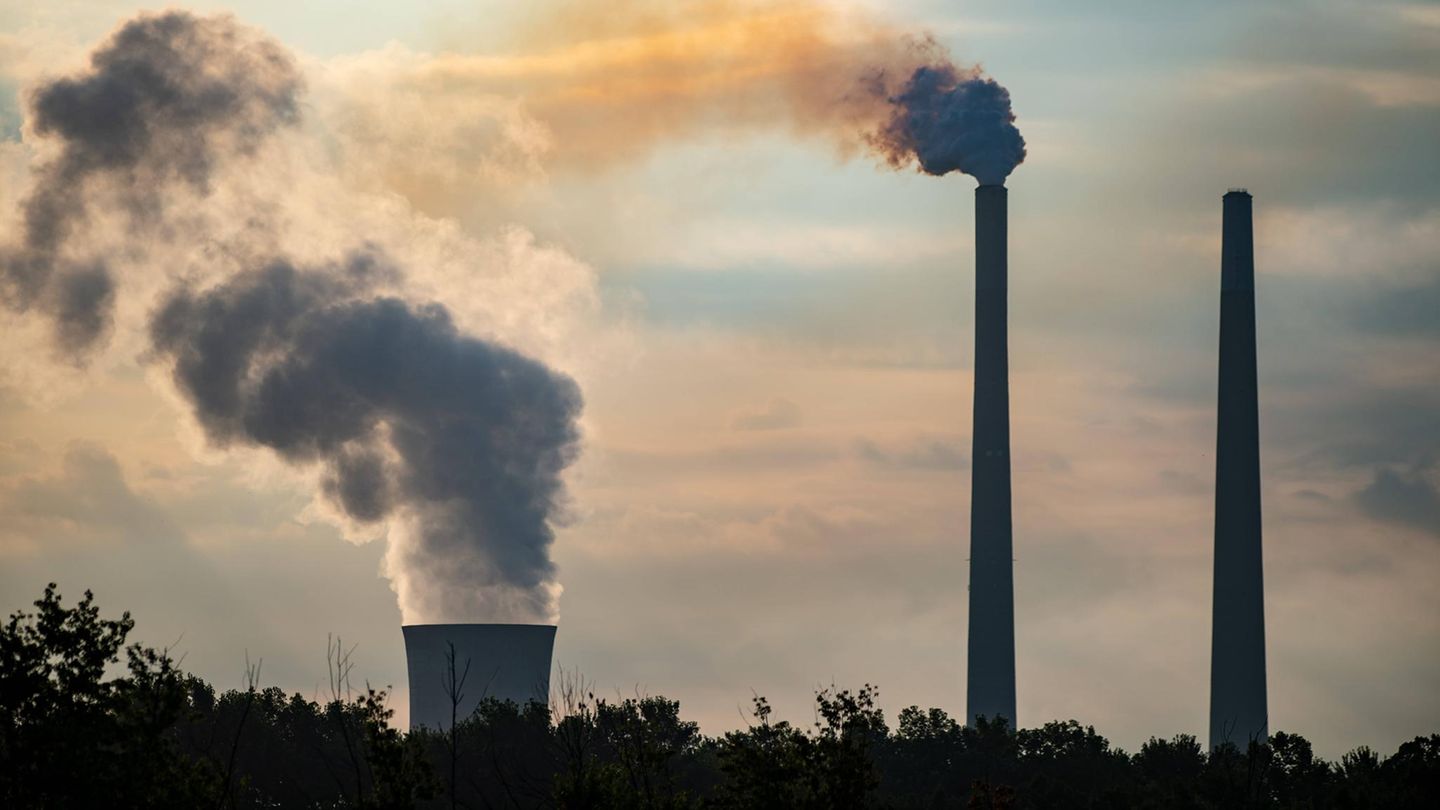Climate crisis
This is how we will live when we miss the 1.5 degree goal
A guest contribution by Lukas Daubner
Copy the current link
Add to the memorial list
Climate change is becoming increasingly threatening. The only rescue: bring CO2 back from the atmosphere. Life in the “Overshoot” world is a challenge-for all of us.
The sun goes over Brandenburg. Large parts are just steppe. In 2075 there is an army of facilities on the burned -out earth that suck CO2 from the atmosphere. Agriculture has long been unthinkable. In contrast, there are still agricultural companies in southern Germany. Huge electric trucks regularly roll onto their farms and deliver ground rock, which is then applied to the fields and is supposed to bind CO2 there. Wherever possible, CO2 is pressed and saved in the soil – a lucrative source of income for landowners and municipalities. In contrast, the chimneys are smoke in and around the Black Forest: a large pyrolysis industry has settled here. In her ovens she produces CO2-binding plant cubes.
All of this still looks like science fiction today. But it describes the world almost exactly in which we may soon be living: in a CO2 drawing world.
If humanity misses the Paris 1.5-degree goal-and that is exactly what is currently emerging-the emission reduction remains the central climate-political task. In the future, however, CO2 removal to gigantic extent will also be necessary. This has far -reaching consequences: for politics, for society, for the climate protection movement – for all of us.
We will probably tear the climate target in a few years
New alliances are necessary, we can probably no longer afford old front positions. Environmental activists, for example, have to cooperate with the oil and gas industry in the post-1.5-degree world because their skills are needed to save CO2 safely and in the ground in the ground. There will be new conflicts, new dangers.
And politics will need other stories than today to take people with them on their way to a new era. At a time when our planet suffers from the “Overhoot” caused by all of us – an English word, best translated with the term: permanent overload.
To person
Lukas Daubner is a political scientist and sociologist. He works at the Liberal Modernity Center in Berlin and deals primarily with questions about the ecological modernization of business and society
It is becoming increasingly unlikely that the global warming to a maximum of 1.5 degrees Celsius compared to pre -industrial times. At the moment, humanity is even towards heating by around 3 degrees by 2100 – with devastating ecological and social consequences. It is likely that the 1.5-degree threshold will be torn in the early 2030s.
In this situation, the overhoot concept comes to the fore. The idea that relies on the temperature rise by massive CO2 withdrawal in the second half of the century. The stronger the overhoot, the greater the need for CO2 withdrawal. From today’s perspective, Overhoot is probably the only way to reach the Paris climate target.
What is CO2 withdrawal?
If more CO2 is removed from the atmosphere than emitted by different methods, so -called negative emissions are created. They are urgently needed to stabilize the earth’s climate and reduce the temperature again. The easiest way to save CO2 is to be saved in floors through healthy forests, plant bubils or more humus.
It becomes more complicated in technical processes such as the direct removal from the air, called “Direct Air Capture” (DAC) by experts. Other options include burning or fermenting biomass with subsequent deposition and storage of the CO2. There are other technologies. Everyone has one thing in common: they are demanding, complex and expensive processes.
To say it clearly: these are not rosy prospects. An overhoot world will be a clearly broken than today.
Climate protection in huge dimensions
The challenges are huge: In order to reduce the global temperature by only 0.1 degrees, about 220 billion tons of CO2 would have to be removed – five times today’s global annual emissions. To classify: Around two billion tons of CO2 are currently removed per year through worldwide reforestation activities. These quantities make it clear that CO2 avoidance must be a top priority. But she alone is no longer enough.
What does this mean for climate protection and its actors – non -governmental organizations, parties, environmental initiatives, companies or research? What does it mean for all of us?
New, unprecedented alliances are emerging
With the 1.5-degree threshold in the rear-view mirror, the paradigms shift in climate protection. So far, the challenge has been: reducing emissions. In the future, a second, as important, could be added: CO2 from the atmosphere back.
Then it’s no longer about something too avoid -namely exceeding the 1.5-degree threshold. But therefore to return. The establishment of a global CO2 removal infrastructure is thus a central task. The focus is on technologies that have so far been skeptical-such as the removal from the air (DAC) or industrial CO2 storage. Estimates assume that the global DAC industry has to take on the size of the current oil industry in order to remove the atmosphere of CO2 to a significant extent.
New, unprecedented alliances are emerging, but also not previously known conflicts. Climate protectioners will work for CO2 withdrawal farms, pyrolysis stoves and CO2 memory, while resident, parts of politics and “classic” industry may be agitated against it.
Will the Black Forest become a planty coal hotspot?
In order for the Black Forest to become the heart of the CO2 withdrawal industry in Germany, enormous organizational and economic challenges must be found. Similar to waste or sewage disposal, CO2 removal will hardly be able to carry yourself.
In the medium term, climate protectors will have to work to ensure that governments and private donors spend large sums in order to enable CO2 withdrawal on an industrial scale. It is then required from those trust in large technologies that generally do not trust such technologies: from environmental activists and eco -movement. You will have to break with your technological traditions – to save the planet.
For the accelerated weathering, a method in which huge quantities of fine -torn rock are applied in fields, quarries have to be removed and many large trucks drive through the area. Here and with other CO2 withdrawal methods, it is easy to paint out how to collide the interests of climate protection with those of environmental protection. Especially if the CO2 extraction has to be done to an industrial extent at some point.
Friends and opponents of yore have to reinvent themselves
It is already clear that the establishment of a functioning CO2 removal infrastructure will only succeed if very different social groups work together: climate protectors and engineers, farmers and mine operators and residents rural areas where most of the CO2 removal will take place.
Climate protection in an overhoot world therefore requires new ways of thinking, unusual alliances, political as well as technical creativity.
Everything should be done today so that the overhoot remains as low as possible. But we will probably no longer be able to completely prevent this overload of our earth. The only strategy to keep the 1.5-degree goal alive is: The friends and opponents of yore-they have to reinvent themselves.
Source: Stern
I have been working in the news industry for over 6 years, first as a reporter and now as an editor. I have covered politics extensively, and my work has appeared in major newspapers and online news outlets around the world. In addition to my writing, I also contribute regularly to 24 Hours World.






